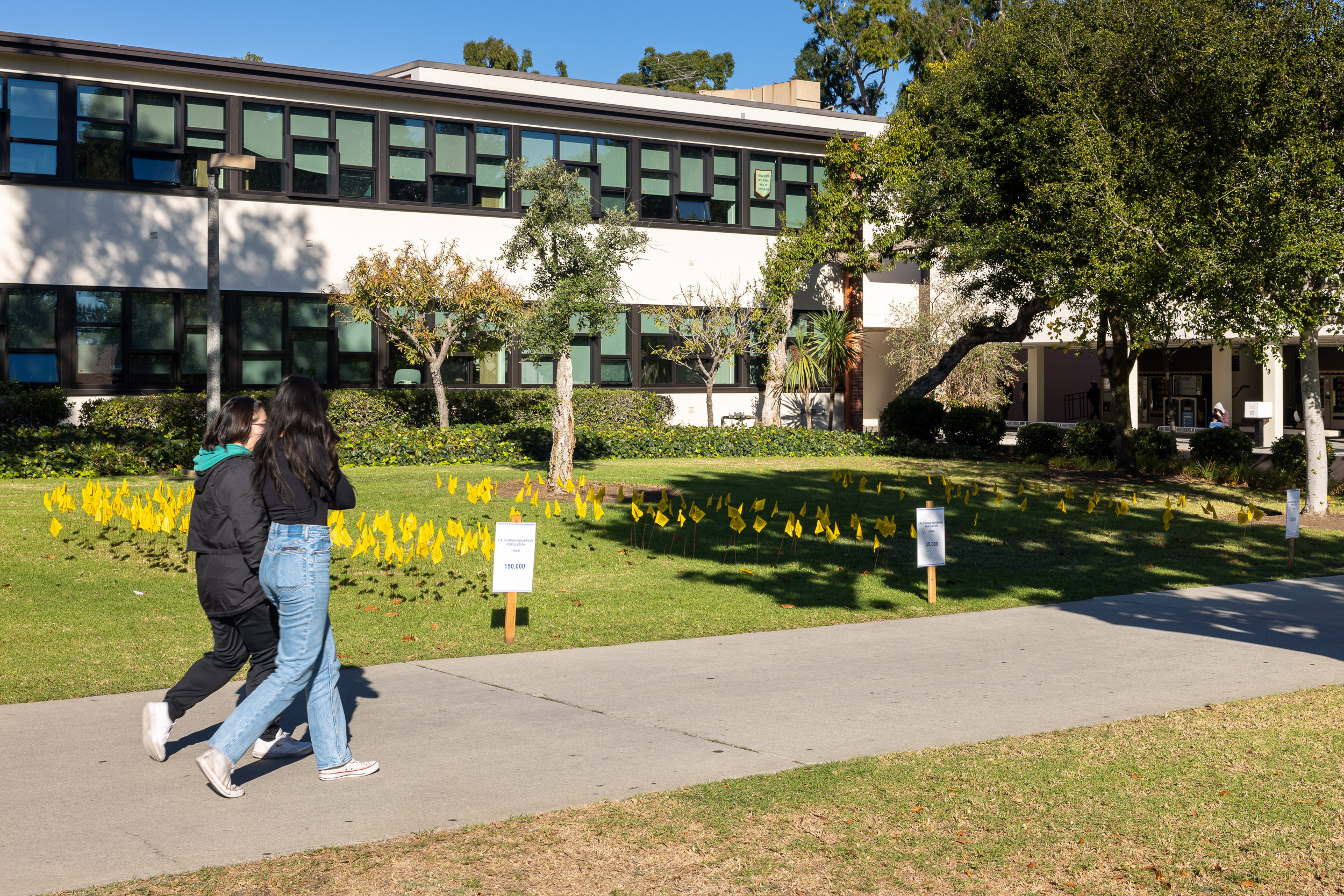CSULB flag installation pays homage to lost lives of Native Americans
Every November, Rue Cepeda is excited to see the patch of grass dotted with 300 yellow flags in Cal State Long Beach’s upper quad. It is opportunity to share her family’s long history of the genocide of the American Indians in California.
“I enjoy seeing taking up this space,” said Cepeda, a fifth-year American Indian Studies major and president of the American Indian Student Council. “It helps with the ignorance and unknowing of what happened to American Indians here in California and Long Beach because it is a very serious topic.”
Each flag in the Genocide Flag Installation bears the printed message “count what you value” in the Tongva language, which is meant to remind The Beach community of the dwindling number of American Indians in California.
The Beach is located on the traditional land of the indigenous tribe of the Gabrielino/Tongva/Kizh and Acjachemen/Juaneno.

The art installation is part of the events for Native American Heritage Month and will be on display until the end of the month.
“This is such a visual representation of the history of the land, California and history of the campus,” AIS director Art Neri said.
California State University, Long Beach is located on the traditional land of the indigenous tribe of the Gabrielino/Tongva/Kizh and Acjachemen/Juaneno.
Craig Stone, retired AIS program director, created the installation to remind others of the genocide of the Indian tribes in the Americas.
Research shows that over the span of 20 years, 80 percent of California’s Native Americans died – either from disease or were killed during the seizure of their land by settlers who came during the Gold Rush.
It has been estimated that more than 16,000 Native Americans were massacred during the genocide, which took place from the 1840s through the 1870s.

















